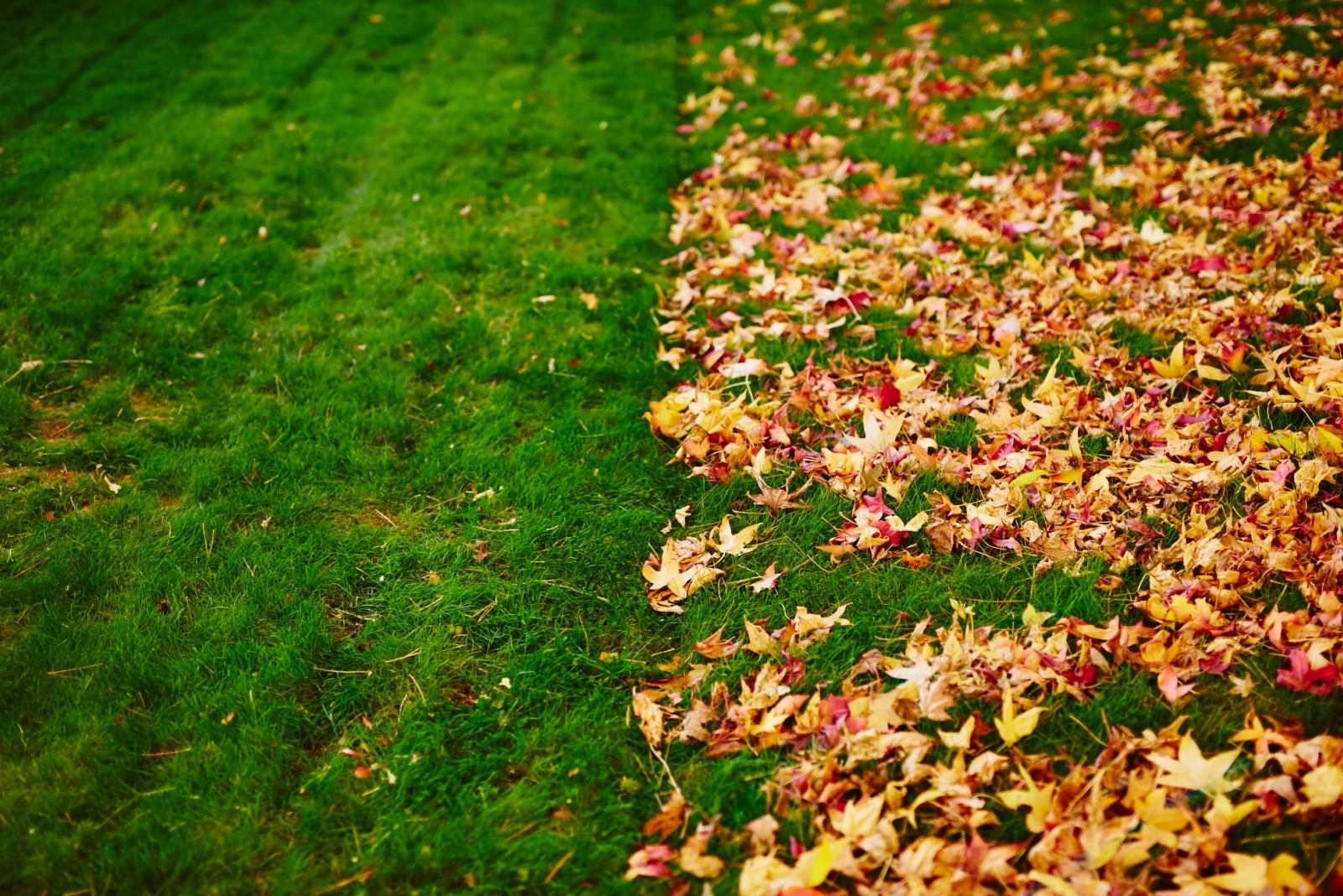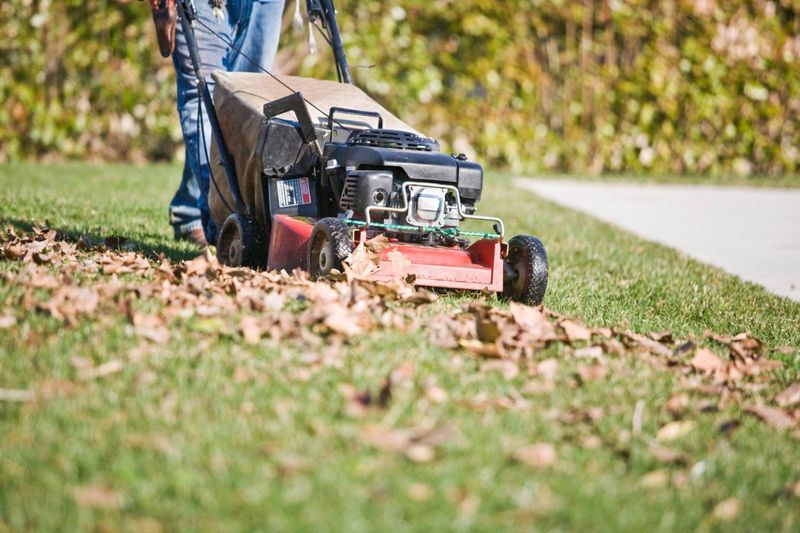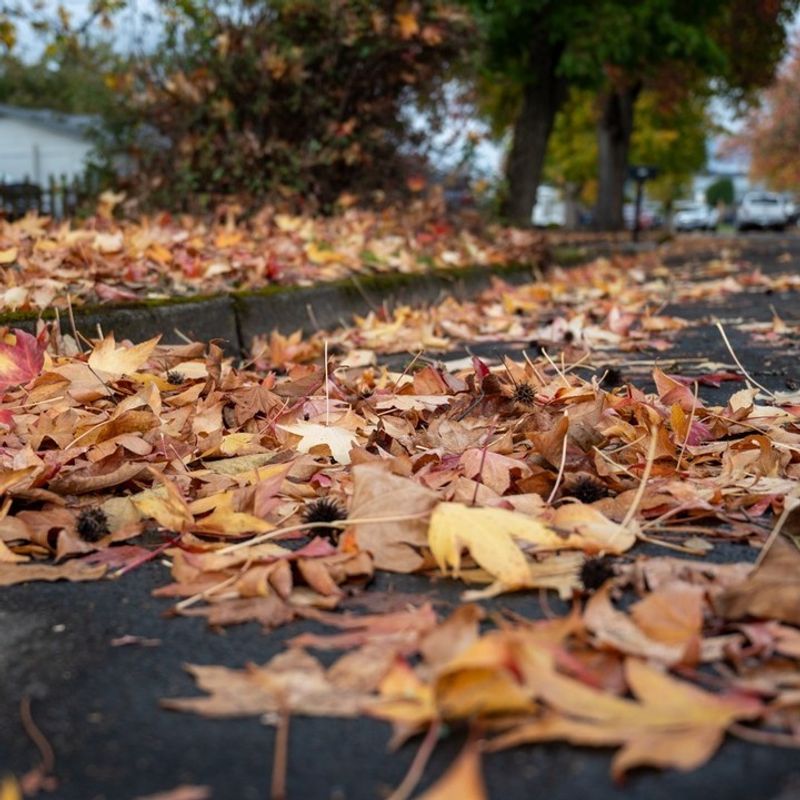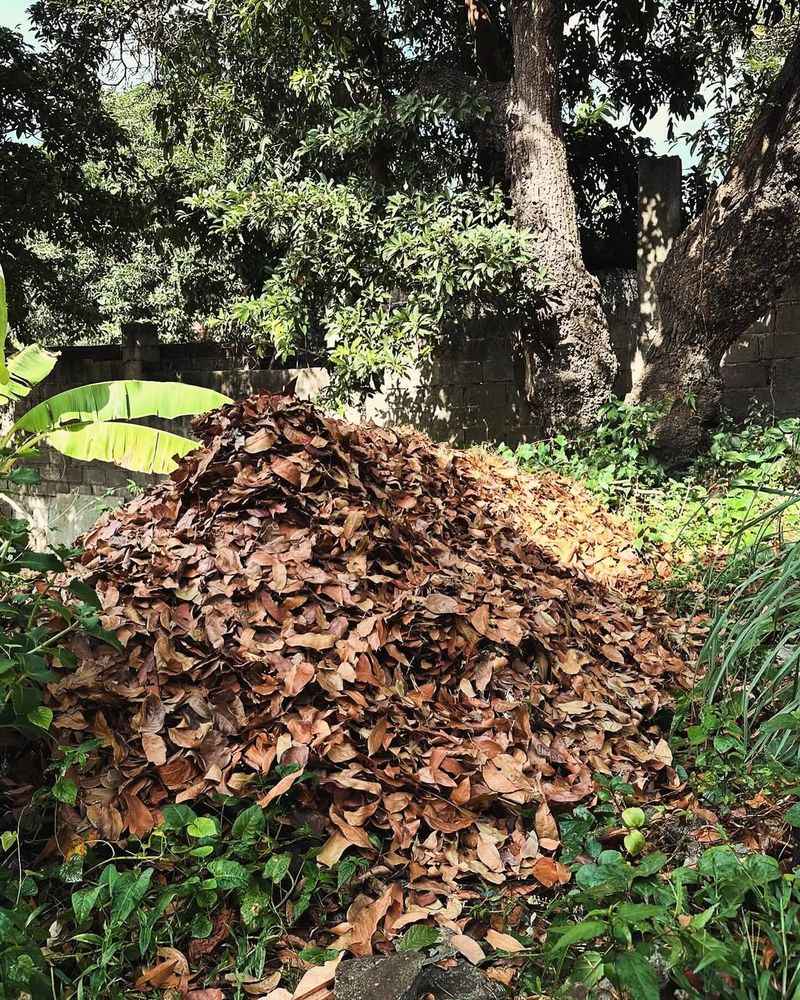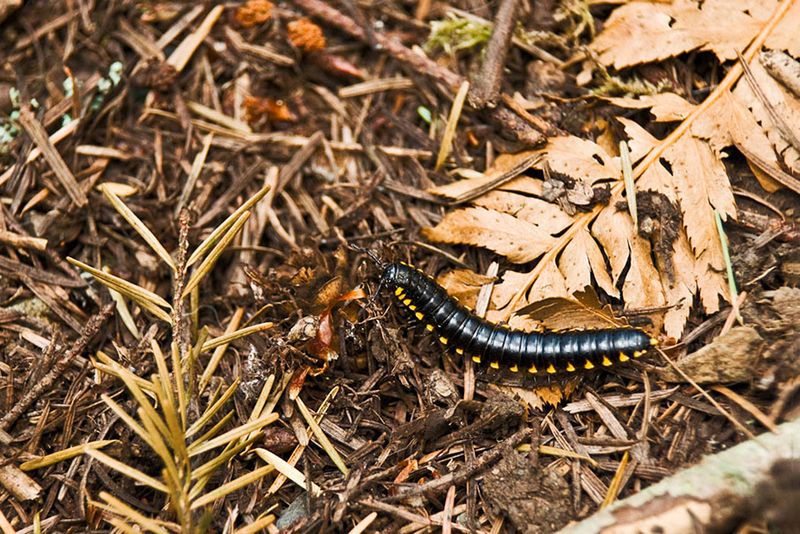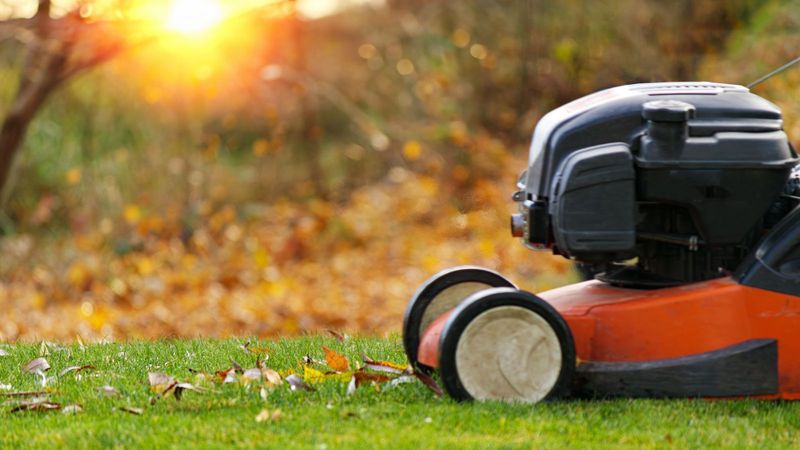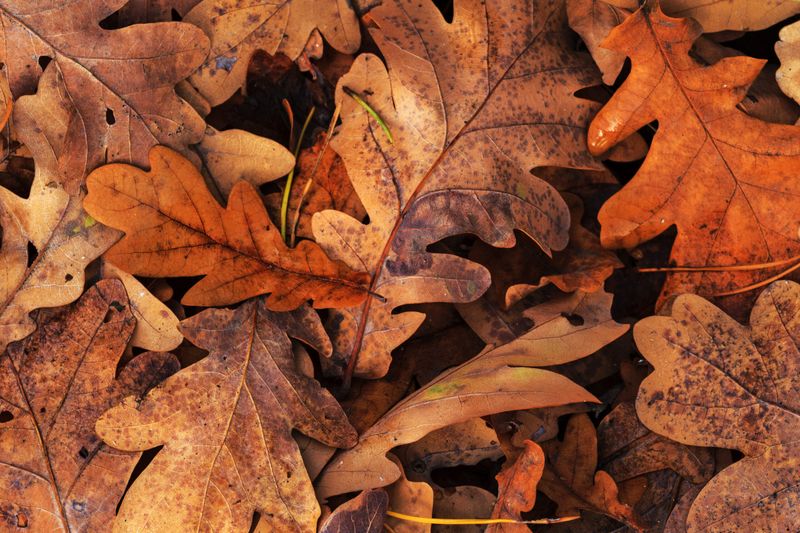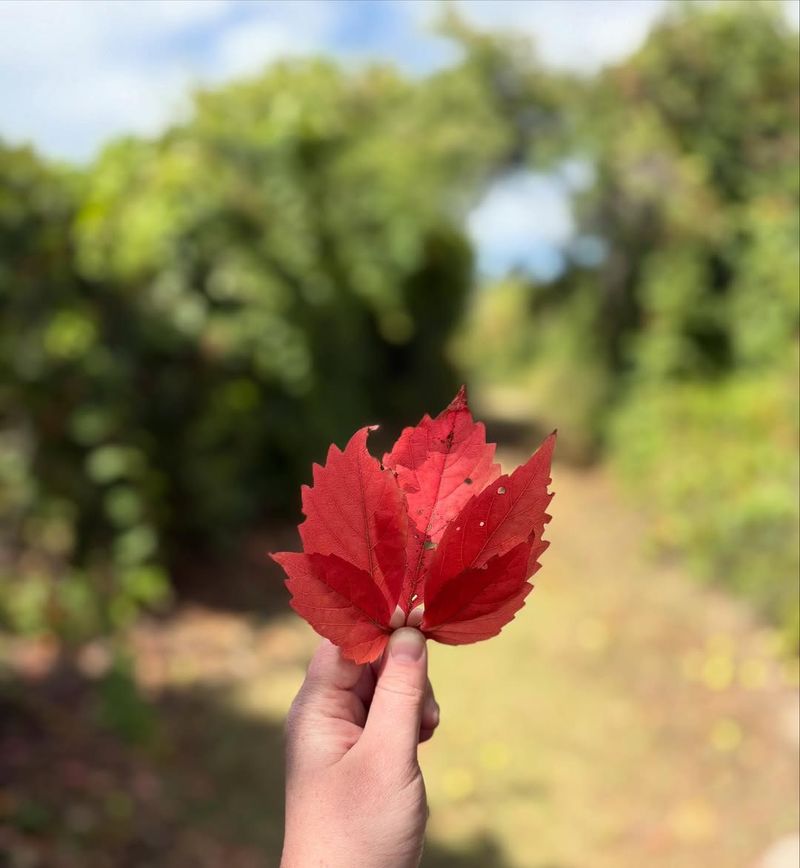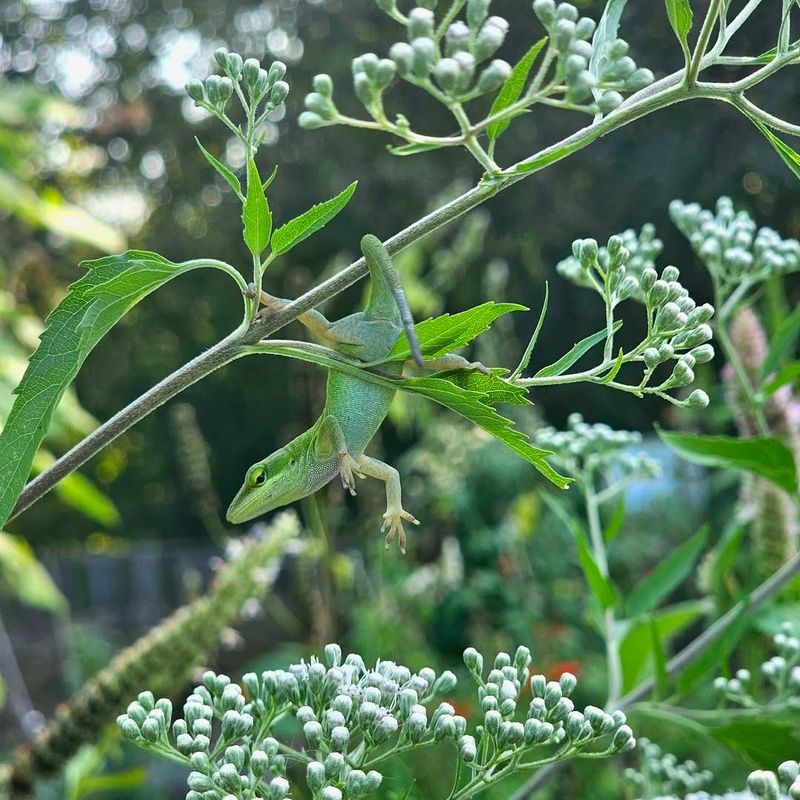Fall in Pennsylvania paints the landscape with stunning color—and then blankets it in leaves. As they pile up, gardeners face the age-old question: rake or mow? It’s more than a chore; it’s a choice that shapes your yard’s health.
Those fallen leaves aren’t just debris—they’re nature’s mulch. Mowing them into the lawn can feed the soil and support beneficial insects. Raking, on the other hand, keeps things tidy but may disrupt local wildlife.
I’ve found that a balanced approach works best. Leave some leaves in garden beds, mulch the rest into the grass, and skip the landfill altogether. Your lawn—and the ecosystem around it—will thank you.
1. Mulching Saves Time And Benefits Your Lawn
Mowing leaves directly into your lawn creates natural mulch that feeds your soil. In my Pennsylvania garden, I’ve found that leaf pieces decompose faster than whole leaves, releasing nutrients gradually.
The key is mowing when leaves are dry and using a mulching mower that cuts them into tiny bits. This approach saves hours of raking and bagging while recycling nutrients back into your yard.
Aim to shred leaves small enough that grass still peeks through. Too thick a layer might smother your lawn, especially during our wet Pennsylvania winters.
2. Thick Leaf Layers Need Removal
When maple and oak trees dump their entire canopy on your yard, mowing isn’t always enough. Heavy leaf coverage can suffocate grass and create moisture problems during Pennsylvania’s damp fall seasons.
Consider raking or blowing leaves from areas where they pile several inches deep. The sweet spot? Leave a light dusting of shredded leaves but remove the heavy accumulations.
I once ignored a thick patch under my sycamore and found dead grass and fungal issues the following spring. Sometimes selective raking saves future headaches.
3. Create Garden Gold With Leaf Compost
Fallen leaves transform into incredible soil amendments when properly composted. Rather than seeing them as waste, Pennsylvania gardeners can view leaves as free fertilizer waiting to happen.
Collect raked leaves in a dedicated bin or pile, adding some nitrogen-rich materials like grass clippings to speed decomposition. Shredded leaves break down much faster than whole ones.
My compost from last fall’s oak and maple leaves became the perfect addition to my vegetable beds this spring. The rich, crumbly texture improved both drainage and moisture retention in our clay-heavy Pennsylvania soil.
4. Protect Native Beneficial Insects
Completely clearing your yard of leaves removes critical winter habitat for beneficial insects. Many Pennsylvania native butterflies, including luna moths and swallowtails, overwinter in leaf litter as pupae or eggs.
Leaving some ungroomed areas, especially around trees and in garden beds, provides essential shelter. These insects aren’t pests – they’re pollinators and pest controllers your garden needs next season.
After learning about this connection, I now designate “insect sanctuaries” in less visible corners of my yard. These undisturbed leaf pockets have increased the butterfly population in my garden significantly.
5. Mowing Works Best For Light To Moderate Leaf Cover
For yards with a moderate leaf drop, mowing offers the perfect solution. The ideal scenario is when leaves barely cover the grass – perfect conditions for mulching directly into your lawn.
Mow before leaves become wet and matted from Pennsylvania’s fall rains. A weekly pass with your mower prevents buildup and makes the job easier than waiting until everything falls at once.
The first time I tried this approach instead of raking, I saved nearly three hours of yard work. Plus, my lawn stayed greener through winter than in previous years when I had removed all the leaves.
6. Acidic Oak Leaves Require Special Handling
Oak leaves differ from other tree varieties because they’re more acidic and decompose more slowly. This makes them less ideal for direct lawn mulching but perfect for acid-loving plants common in Pennsylvania gardens.
Collect oak leaves separately and use them around azaleas, rhododendrons, and blueberries. These plants thrive in the slightly acidic conditions that oak leaf mulch creates.
Last year, I mulched my blueberry patch with shredded oak leaves from my neighbor’s massive red oak. The plants responded with more vigorous growth and better fruit production than ever before.
7. Timing Matters For Leaf Management
Pennsylvania’s fall leaf drop typically happens in waves, not all at once. Working with this natural rhythm makes leaf management more manageable and less overwhelming.
Early-dropping species like birch and maple can be handled in early-to-mid October, while oaks and beeches might hold their leaves until November. Regular maintenance prevents the “weekend warrior” syndrome of tackling mountains of leaves all at once.
I’ve found that mowing once weekly during peak fall season keeps leaf levels manageable. This approach fits better with busy schedules than dedicating entire weekends to massive leaf cleanup operations.
8. Consider Wildlife Before Complete Cleanup
Pennsylvania’s native wildlife depends on leaf litter for survival through our cold winters. Leaves provide insulation for hibernating frogs, toads, and beneficial insects, plus foraging areas for birds seeking insect larvae.
Creating wildlife-friendly zones where leaves remain undisturbed strikes a balance between neat landscaping and habitat preservation. Areas under shrubs and in woodland edges work perfectly for this purpose.
The chipmunks and wrens in my yard spend winter days searching through leaf piles for food. Watching them reminds me that my garden isn’t just for me – it’s a shared ecosystem worth preserving with thoughtful leaf management.

